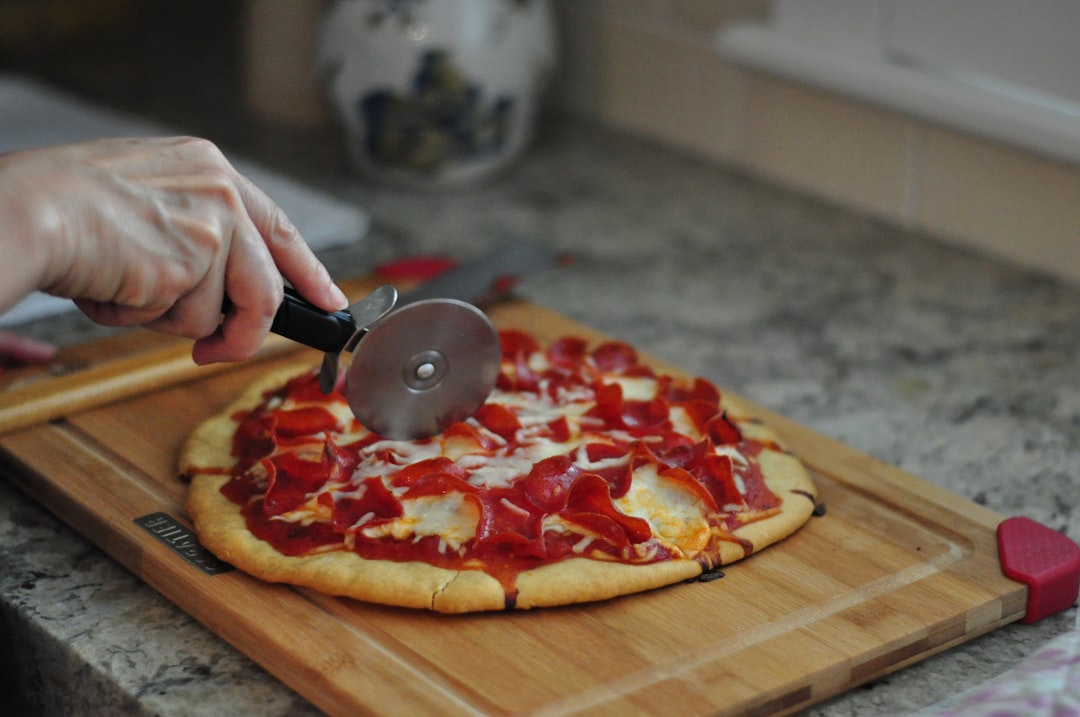
An Essential Guide to the Best Pizza Cutters
Share
Why the Right Pizza Cutter Makes All the Difference
A pizza cutter is a kitchen tool for slicing pizza cleanly without dragging toppings. Here are the main types and what to look for:
Main Types:
- Rolling wheel cutters - The most common type, with a circular blade that rolls.
- Rocking blade cutters - A long, single-beveled blade that rocks back and forth.
- Pizza scissors - Specialized shears with offset handles for precise snipping.
Key Features to Consider:
- Blade material: Carbon steel stays sharper longer than stainless steel.
- Blade size: 4-inch diameter wheels work best for all crust types.
- Handle design: A comfortable grip with sturdy construction is essential.
- Sharpness: The blade must slice cleanly without dragging toppings.
As one expert noted, "A poor pizza cutter can ruin your pies" by failing to slice completely or crushing toppings.
Price Range: Quality pizza cutters range from budget-friendly options around $15 to premium models up to $40, with top performers often in the $20-25 range.
For a quick primer on the tool's history and design, see the pizza cutter entry on Wikipedia.
A sharp, well-designed pizza cutter glides through thick crusts in one pass, leaving toppings intact and creating clean slices. The difference is dramatic.
I'm Sean Kearney. My background in restaurant equipment sales has shown me how the right tools boost a kitchen's efficiency. For pizzeria owners, a quality pizza cutter means the difference between frustrated staff and smooth service during dinner rushes.
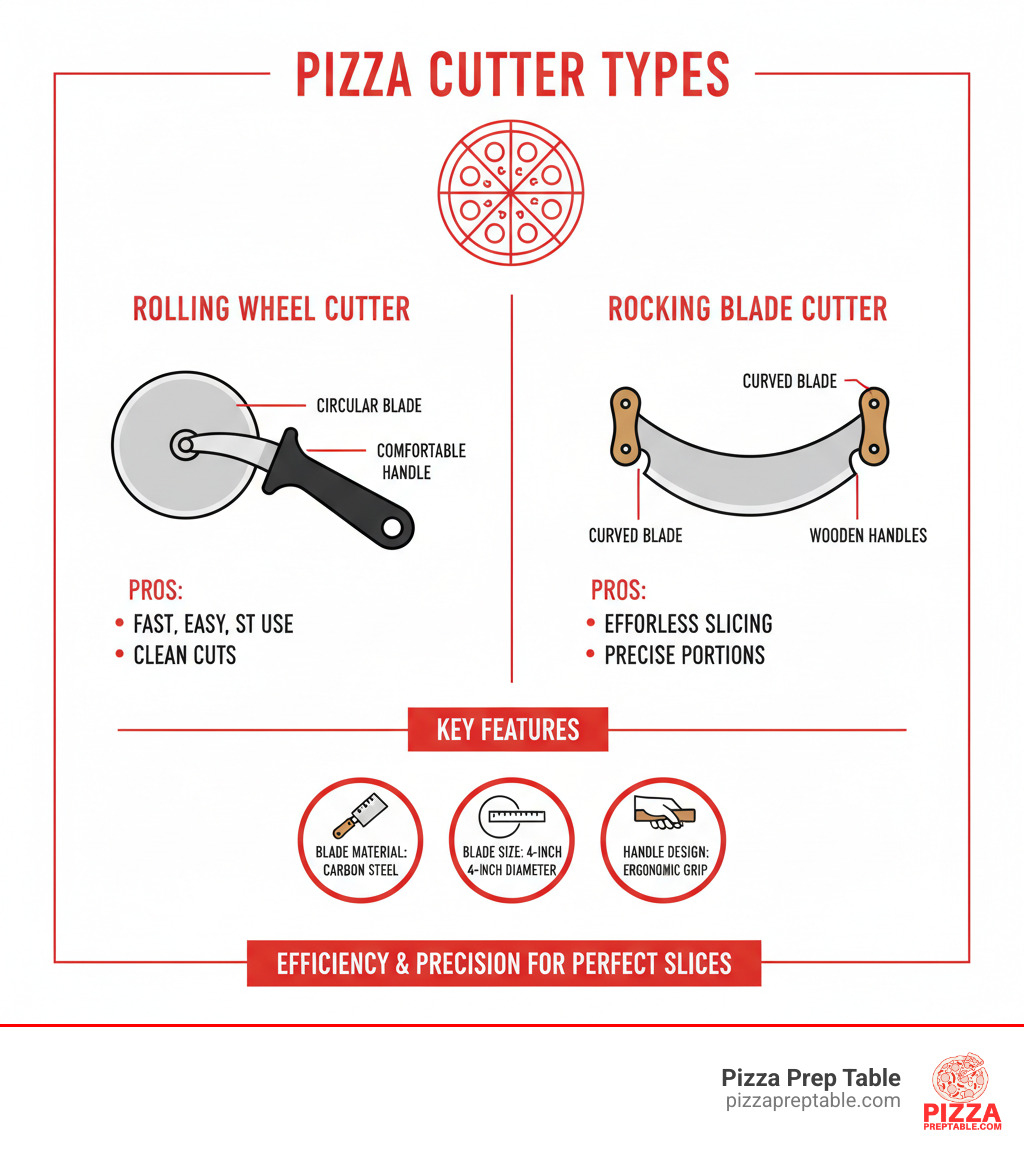
Anatomy of a Great Pizza Cutter: Types and Key Features
While many pizza cutters look similar, the details make a world of difference. Let's explore the main types and the features that separate a great cutter from a mediocre one.
Rolling wheel cutters are the classic choice. Their circular blade rolls across the pizza as you push. For the best performance, look for a carbon steel blade, which stays sharp much longer than standard stainless steel. The Mercer Culinary Millennia Pizza Cutter is a great example of tough carbon steel construction.
Blade size also matters. While small 2-inch wheels exist, a 4-inch diameter wheel is the sweet spot, powering through both thin and deep-dish crusts. A comfortable, ergonomic grip is crucial for control and applying steady pressure. Finally, check the construction; riveted connections are more durable than screws, and the blade should spin freely with minimal wobble.
Rocking blade cutters, or mezzalunas, use a different method. These feature a long, curved blade with handles on each end. You place the blade on the pizza and rock it back and forth for a clean, single-motion cut. Most use easy-to-clean stainless steel blades, but a single-beveled edge offers maximum sharpness. Wooden handles, like on the Lamson Pizza Rocker, provide excellent leverage, while lightweight designs like the Gozney Pizza Rocker make the motion effortless.
Pizza scissors are common in Italy and offer surgical precision. Their offset handles and flat bottom blades let you snip through slices without disturbing toppings. While fun, novelty cutters shaped like saws or motorcycles often prioritize looks over function.
For more insights on building the perfect pizza setup, check out our guide on pizza ovens.
Rolling-Style vs. Rocking-Style Pizza Cutters
The choice between a rolling wheel and a rocking blade is a common debate. Both are excellent tools, but they excel in different areas.
| Feature | Rolling-Style Pizza Cutter | Rocking-Style Pizza Cutter (Mezzaluna) |
|---|---|---|
| Speed | Slower; may require multiple passes. | Faster; often cuts in a single pass. |
| Ease of Use | Intuitive and easy to maneuver. | Requires some technique but is powerful. |
| Topping Disruption | Can drag toppings if dull. | Less likely to drag toppings. |
| Storage | Compact and fits in a drawer. | Bulky and may require special storage. |
| Best For | Home use, various pizza sizes, intricate cuts. | Large pizzas, thick crusts, professional use. |
Rolling cutters offer great maneuverability for custom cuts and are easy to store. However, a dull blade can drag toppings. Rocking cutters are speed demons, delivering clean, single-pass cuts with a chopping motion that keeps toppings in place. Their main downsides are their bulky size and that they can be harder to clean.
What to Look for in a Quality Pizza Cutter
Regardless of style, focus on these key features:
- A sharp blade: This is the most critical feature. A sharp blade glides through pizza, while a dull one creates a mess.
- Comfortable handle: An ergonomic handle is essential for applying firm, steady pressure without hand cramps.
- Sturdy construction: The tool should feel solid. For rolling cutters, the blade should spin freely but not wobble excessively. Rockers should be rigid and not flex.
- Easy cleaning: Look for simple designs without crevices where food can hide. Some models have removable blades for easier cleaning.
- Price vs. performance: You don't need to spend a fortune, but ultra-cheap cutters are rarely worth it. The $15-$40 range usually offers the best value.
Avoid common problems like topping drag and incomplete cuts (signs of a dull or small blade), a flimsy feel, and rusting (choose stainless steel or maintain carbon steel properly).
The Best Pizza Cutters Recommended by Experts
Experts have tested dozens of pizza cutter models on everything from thin Neapolitan to thick deep-dish crusts. They evaluated slicing performance, durability, and value for money to find the standouts that slice cleanly and feel comfortable, all without breaking the bank.
Just as the right pizza cutter makes service smoother, proper dough preparation is equally crucial. Check out our guide on pizza dough mixers to see how the right mixer can transform your operation.
Best Overall Rolling-Style: Mercer Culinary Millennia Pizza Cutter
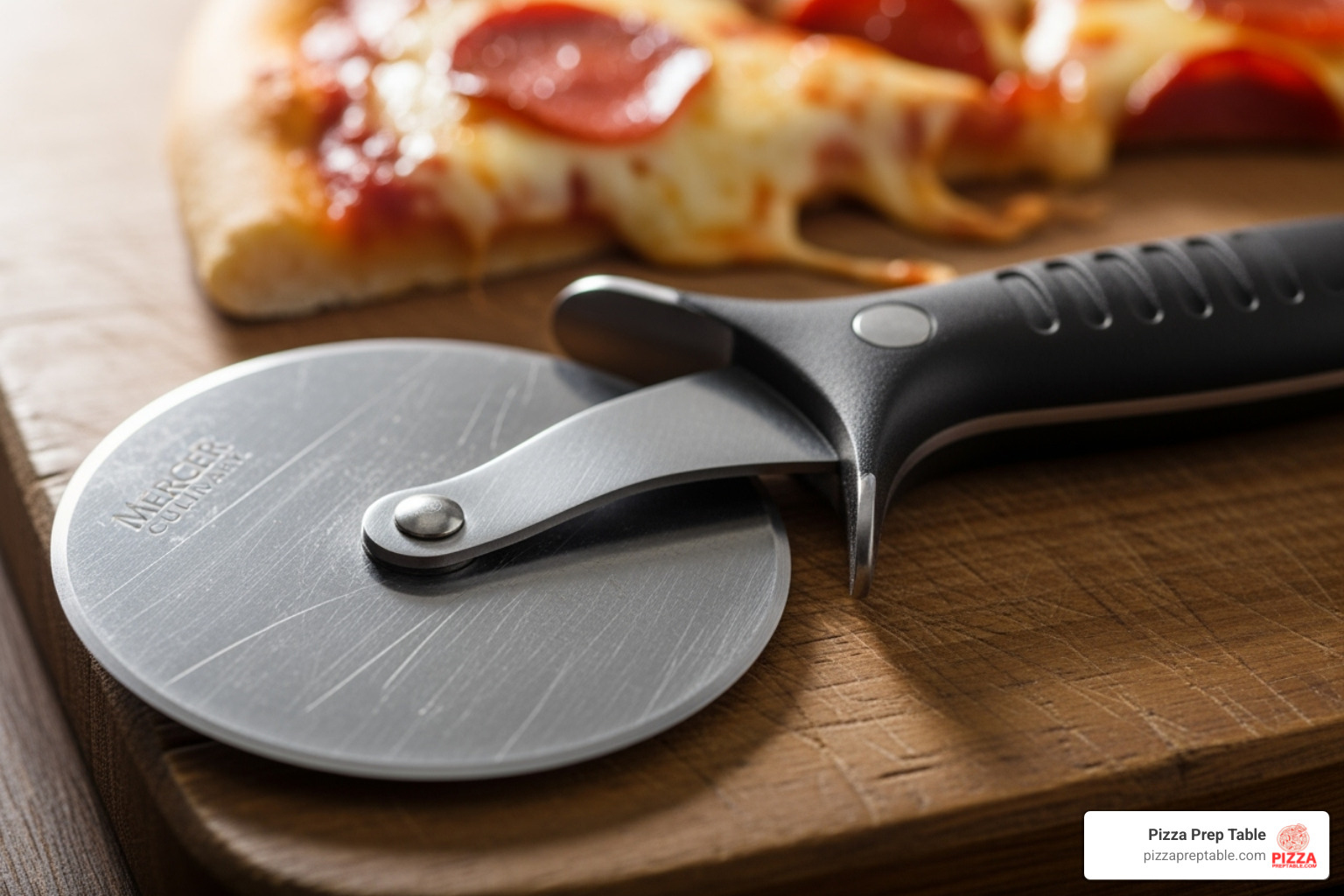
In expert tests, the Mercer Culinary Millennia consistently comes out on top. This isn't a fancy gadget; it's a reliable workhorse. Its secret is the tough carbon steel blade, which holds a sharp edge far longer than basic stainless steel. This means cleaner cuts with less effort.
The comfortable handle provides a secure, ergonomic grip, allowing you to apply pressure without hand cramps. Testers noted it cuts through everything from delicate thin crusts to hearty deep-dish "like butter." For its combination of durability, sharpness, and user-friendly design, this rolling pizza cutter offers exceptional value.
Best Rocking-Style: Gozney Pizza Rocker
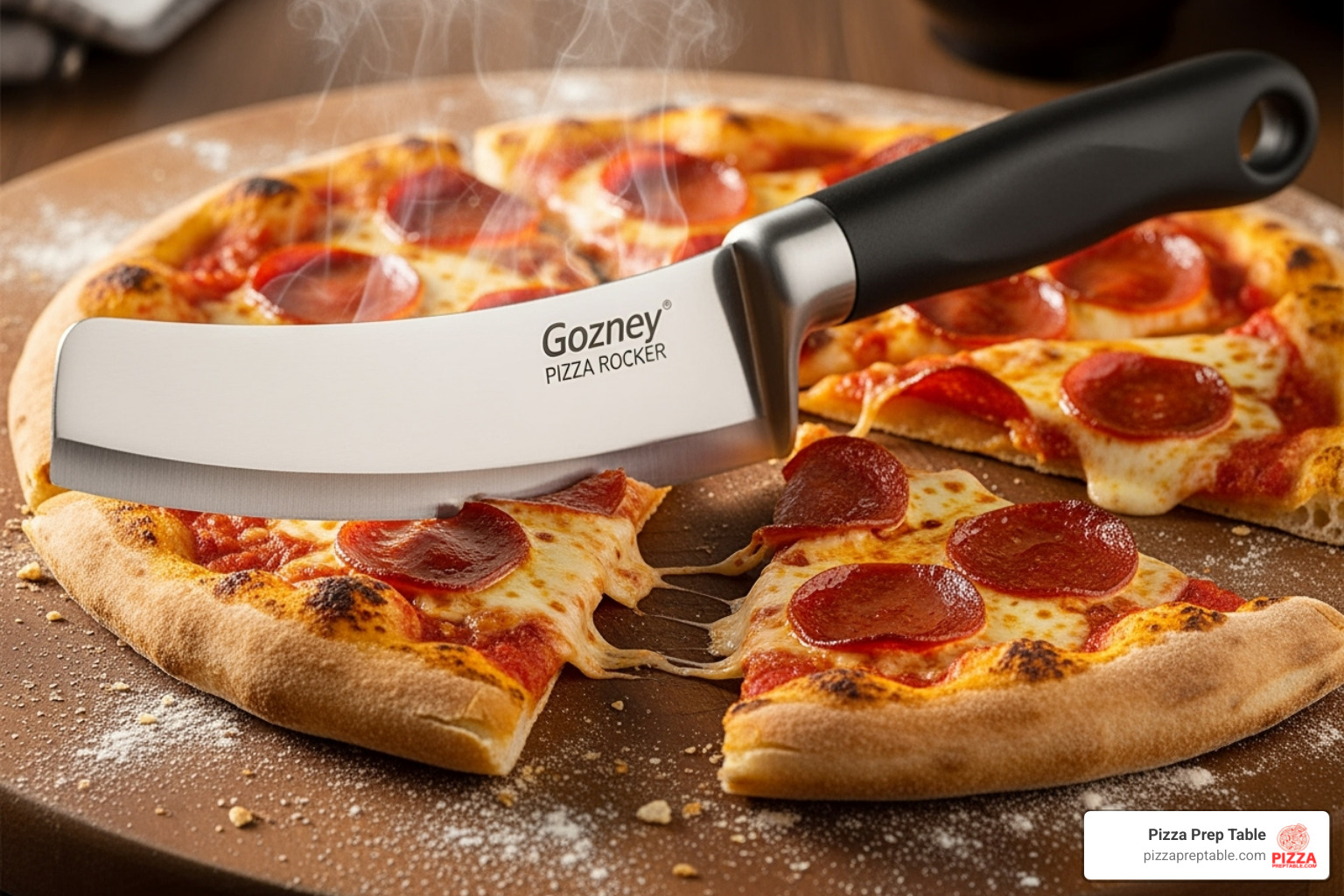
The lightweight Gozney Pizza Rocker makes the rocking motion a satisfying, confident slicing experience. Its sharp stainless steel blade allows you to slice an entire pizza in one smooth motion, preventing dragged toppings and uneven slices.
The design is perfectly balanced—substantial enough to cut cleanly but light enough for comfortable use. The comfortable grip enables quick cuts without sacrificing quality. Unlike bulkier rockers, the Gozney is practical, built to last, and designed for people who take their pizza seriously.
Best Value Pizza Cutter: Cuisinart Pizza Cutter
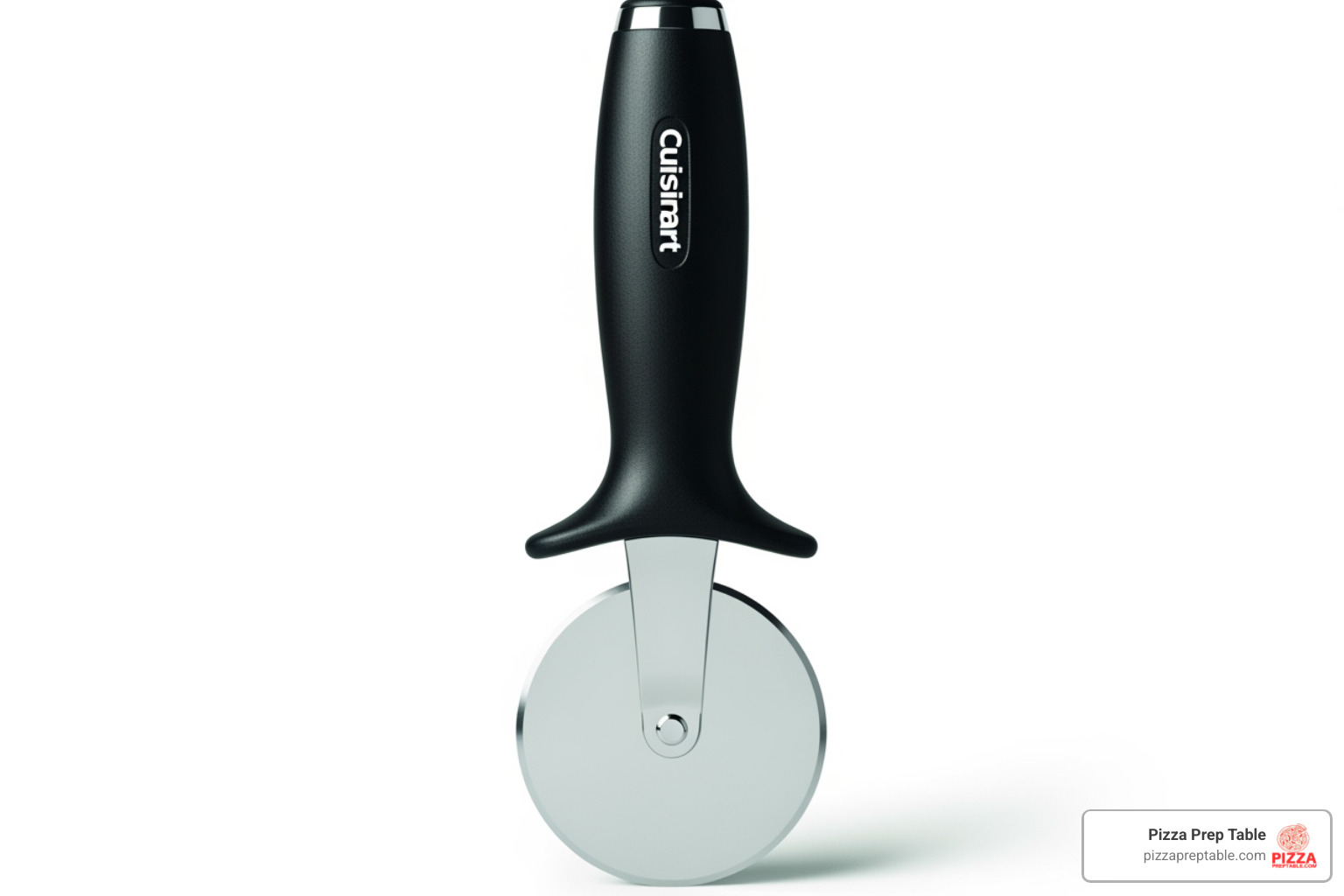
The Cuisinart Pizza Cutter proves that a great quality-to-dollar ratio is achievable. This cutter delivers reliable results without a premium price tag. The sturdy barrel handle provides excellent leverage and a secure, comfortable grip. Its straightforward and effective design is a major plus.
Despite its budget-friendly price, the sharp blade performs well across different crust types and holds up to regular use. For everyday home cooks who want dependable performance without overspending, it's hard to beat this combination of affordability and reliability.
Best Splurge/Multi-Use: Lamson Pizza Rocker
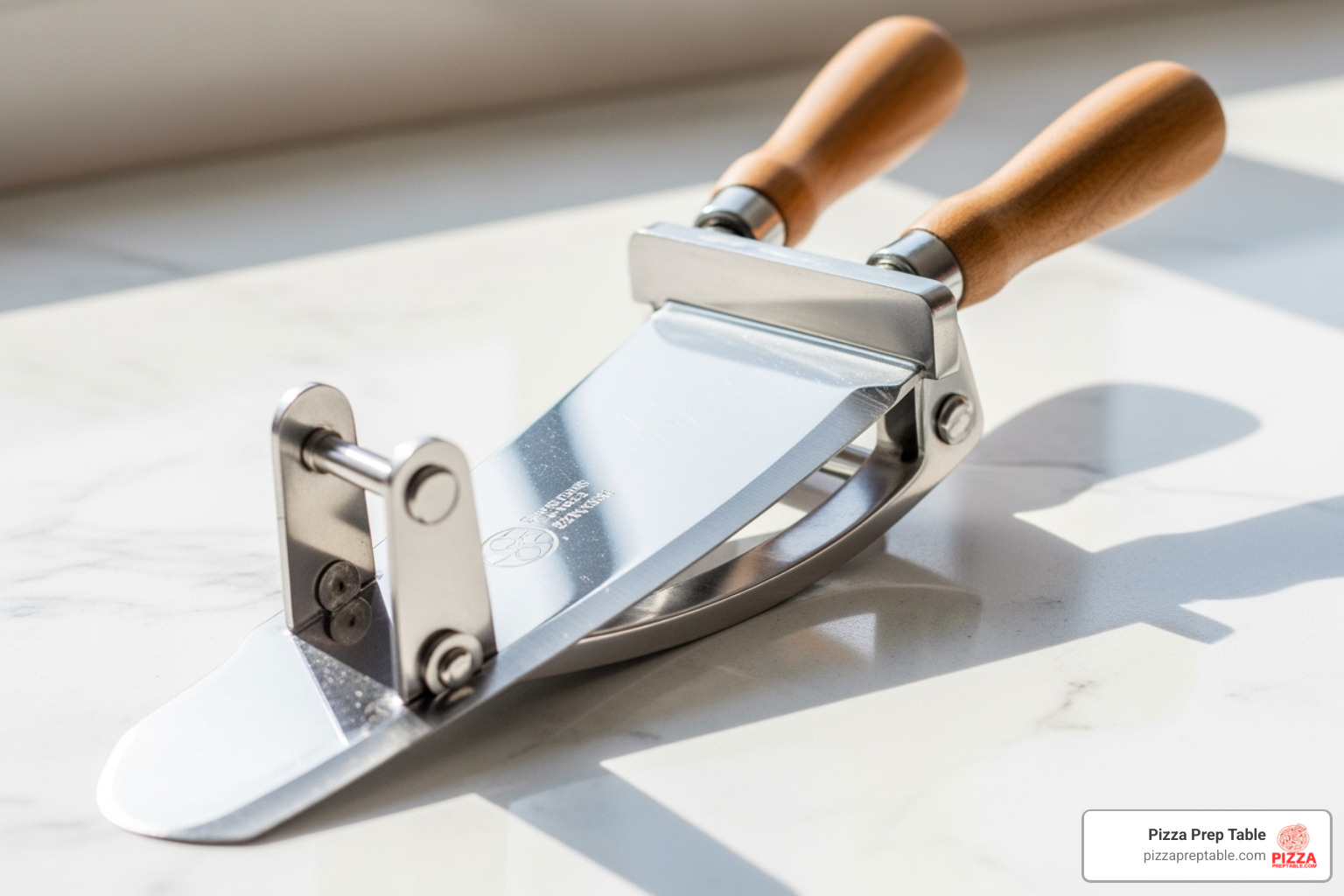
For those ready to invest in a premium tool, the Lamson Pizza Rocker combines exceptional performance with beautiful craftsmanship. This sturdily-built cutter feels substantial and well-made. The single-beveled blade delivers superior cutting power, making quick work of even the most challenging crusts.
Its ergonomic wooden handles provide an excellent grip, allowing you to apply extra pressure comfortably for clean, single-pass cuts. Beyond pizza, this versatile tool excels at chopping herbs and slicing flatbreads, making it a worthwhile investment for serious home cooks and professionals who value durability and superior cutting ability.
Mastering the Slice: Use, Care, and Maintenance
Even the best pizza cutter requires proper technique and care to deliver perfect slices. Fortunately, mastering your cutter is simple.
Getting Your Technique Right
With a rolling cutter, apply firm, even pressure in a single, confident motion from the center to the edge. For rocking cutters, place the blade's center on your cut line and apply downward pressure while rocking from end to end in one smooth motion. This chopping action is ideal for thick crusts.
Keeping Your Cutter Clean
Most modern pizza cutter models are dishwasher-safe. However, always hand-wash cutters with wooden handles, as the dishwasher can cause the wood to dry out and crack. Some models feature removable blades, which simplify cleaning by allowing you to reach every nook and cranny.
Smart Storage Solutions
Rolling cutters fit easily in a utensil drawer. Rocking blades are bulkier and sharper, so they need more care. Many come with protective blade guards—use them to protect the blade and your fingers. A magnetic knife strip is also a great storage option for larger rocking cutters.
Keeping Things Sharp
All cutters eventually need sharpening. Rolling blades are tricky due to their shape; you can use a whetstone or puck sharpener, rotating the blade to maintain a consistent angle. Rocking blades are easier, as you can sharpen them like a curved knife. Between sharpenings, a honing steel can help realign the blade's edge.
If you're not comfortable sharpening your own tools, most professional knife sharpening services can handle pizza cutter blades, but call ahead to confirm.
Proper care ensures your pizza cutter will perform like new for years. For more insights on optimizing your pizza operation, check out our guide on commercial pizza prep tables.
The #1 Rule: Never Cut on a Pizza Stone
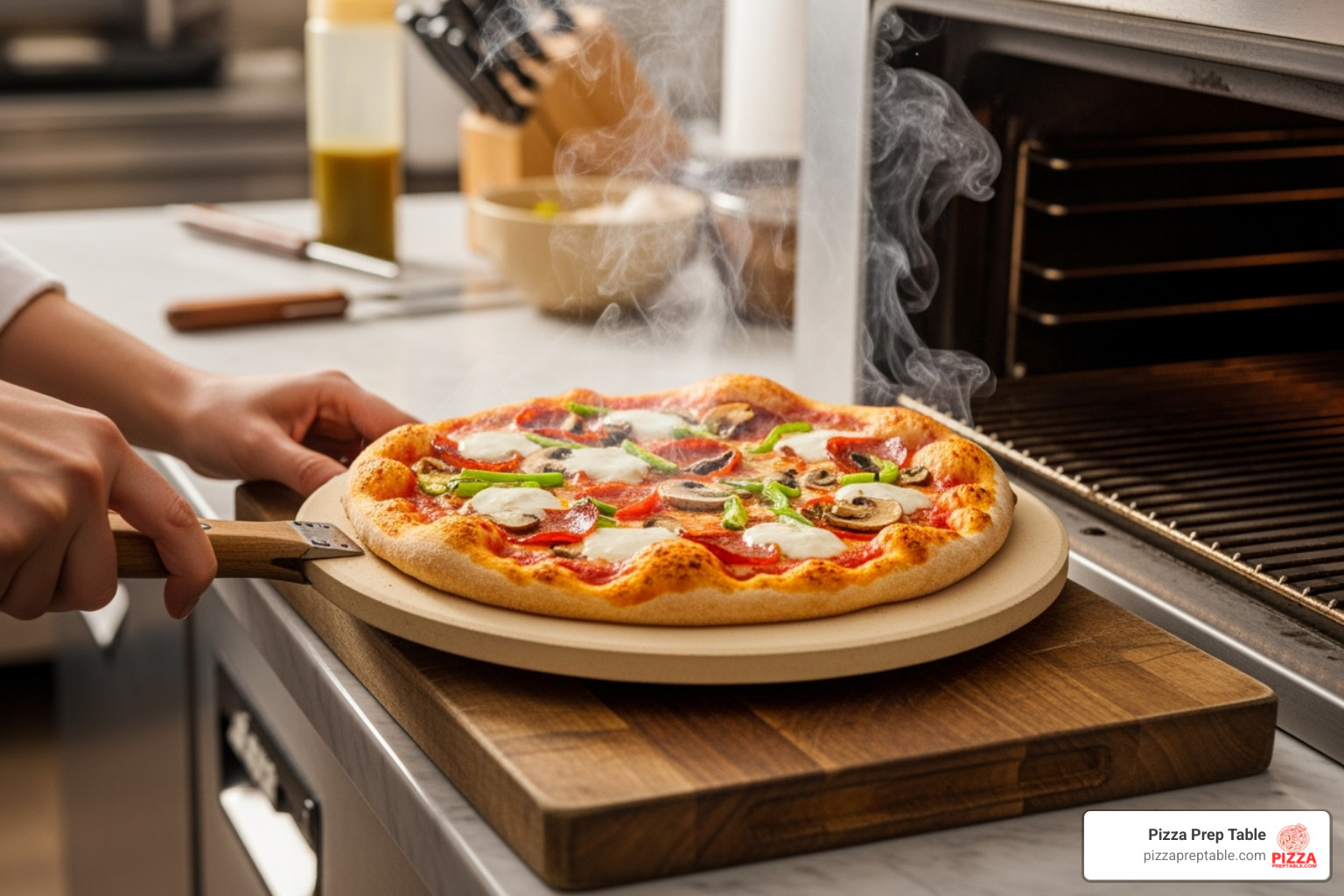
Never cut directly on your pizza stone. This simple mistake will ruin both your cutter and your stone. Pizza stones are harder than your cutter's blade, and slicing on them will quickly dull the edge. It can also scratch, gouge, or even chip your stone.
The Simple Solution
The fix is easy: always transfer your pizza to a cutting board before slicing. A wooden cutting board is ideal because it's gentle on blades, but a plastic one also works. A pizza peel makes this transfer safe and simple. This extra step protects your investment and ensures every slice is clean.
Frequently Asked Questions About Pizza Cutters
Here are answers to the most common questions I get from home cooks and restaurant owners about pizza cutters.
Can you sharpen a pizza cutter?
Yes, and you should. A dull blade crushes toppings and makes cutting difficult. Both rolling and rocking styles can be sharpened. For rolling cutters, you'll need to rotate the blade against a whetstone or puck sharpener to maintain an even edge. Rocking cutters can be sharpened like a curved knife.
If you're not comfortable doing it yourself, professional sharpening services can often handle pizza cutter blades, but it's best to call ahead and confirm.
What is the best pizza cutter for thick, deep-dish pizza?
Deep-dish pizza requires a heavy-duty cutter. For rolling styles, a larger wheel (around 4 inches) provides the leverage needed to get through thick layers. The Mercer Culinary Millennia is a great example that handles deep-dish well.
Sturdy rocking blades are often the best choice. A long, curved blade like that on the Lamson Pizza Rocker allows you to apply even pressure and cut through in a single pass. Regardless of style, the key is to use a sharp blade and apply even pressure.
Can you use kitchen shears to cut pizza?
Yes, kitchen shears work great for pizza. It's a common practice in Italy. Dedicated pizza shears with an offset handle and a flat bottom blade slide easily under the crust to make clean cuts without dragging cheese or toppings. They offer excellent control, especially for trimming individual slices. Just be sure your shears are clean and sharp.
Conclusion
The right pizza cutter makes the difference between a frustrating meal and a perfectly sliced masterpiece. Whether you run a busy pizzeria or enjoy pizza night at home, investing in a quality tool pays off.
Choosing between rolling-style and rocking-style cutters comes down to personal preference. Rolling wheels offer maneuverability and compact storage, while rocking blades provide clean, single-pass cuts ideal for thick crusts and commercial use.
Sharpness and comfort are crucial. A sharp blade glides through crusts without dragging toppings, and a comfortable handle allows for proper pressure. Our recommendations, from the Mercer Culinary Millennia's durability to the Gozney Pizza Rocker's confident slicing, show that quality is accessible at various price points.
Remember the golden rule: never cut directly on your pizza stone. Transfer your pizza to a cutting board to protect your cutter's edge and your stone's surface.
At Pizza Prep Table, we understand that a successful pizzeria demands reliable, professional-grade equipment. From prep tables that streamline workflow to cutters that handle the dinner rush, every tool contributes to your success.
Ready to equip your pizzeria with tools that match your culinary ambitions? Get the right equipment for your pizzeria and find how the right setup can transform your operation.
